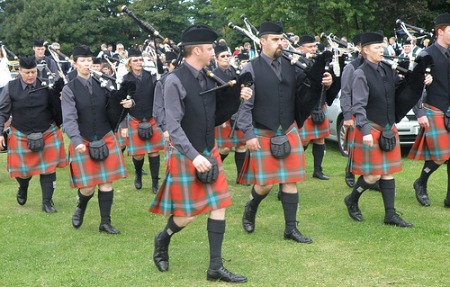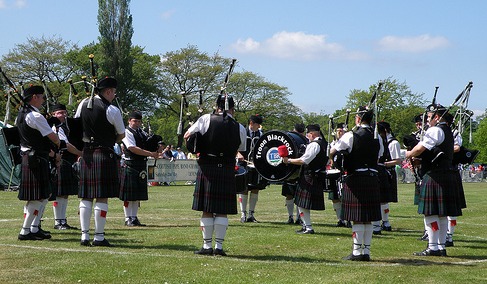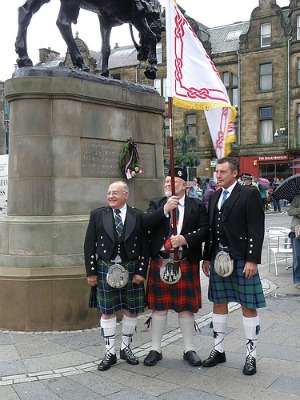|
The Scottish KiltIt is recognized around the world, and the number of people who choose to wear it is increasing every year, as more and more of you celebrate your Scottish heritage. When I was a boy growing up in the Highlands of Scotland, I didn't see that many kilts being worn, but nowadays they are a common sight. Having been born and brought up in Inverness, I have seen the popularity of the kilt increase steadily over the years. And naturally enough the number of kilt stores in the city have also increased. The history of the Scottish kilt is long and often bloody, as Scotland strove to retain its independence from the "Old Enemy" England. But that valiant struggle was lost at the Battle of Culloden (the battle took place on the outskirts of Inverness) and in 1746 the wearing of the kilt was outlawed by the government of the day. The only exception to that new law, was to join one of the Scottish regiments, who by that time were serving as part of the British army. It was these Scottish soldiers in their army kilts, that brought the garment to the attention of the world. And today the Scottish kilt is seen all over the world, being worn by individuals and pipe bands alike. Below you can see a photo of the Coastal Scottish pipe band, from Perth, Western Australia.
Coastal Pipe Band Photo Alex Cunningham The next photo also features a pipe band, but this time a bit closer to home. They are the Troon Blackrock Pipe Band, seen here competing at the Scottish Pipe Band Championships, Levengrove Park, Dumbarton, The tartan they are wearing is the Modern Davidson.
Piping Competition Photo Alex Cunningham Next up wearing their kilts, are three members of the clan Turnbull, who are photographed here raising their clan Standard at Hawick Horse War Memorial.
Raising the Standard Photo Alex Cunningham Given the part the Scottish regiments played in many theatres of war over the last three centuries or so, dressed in their kilts. I find it sad that the newly formed Royal Regiment of Scotland, were having to contend with a shortage of kilts within the regiment, due in part to a lack of funds by the government. It is important if you are thinking of
buying a kilt,
that you find a reputable
kilt maker
who specializes in
Highland Dress. A real kilt is a quality made to measure garment, and as such it is not inexpensive and if looked after properly will last you a lifetime. If you are offered a cheap ready made kilt, my advice is don't buy it (unless you really want a poor imitation tartan skirt). If you would like to see photos of the kilt and Scotland, then please spend some time browsing the pages of this web-site. I have included many pictures which I am sure you will enjoy, and if there is something you particularly want to see and don't find, then please ask me and I will try to include it. You can contact me using the "Contact Us" page which can be found near the bottom of the navigation bar. Return from Scottish Kilt to Scottish Kilts Page |






